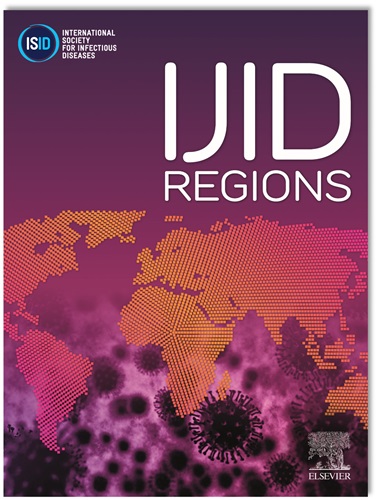The impact of the COVID-19 pandemic on influenza vaccination: A multi-year interrupted time series analysis
IF 4.3
2区 医学
Q1 INFECTIOUS DISEASES
引用次数: 0
Abstract
Objective
To assess temporal changes in influenza vaccination coverage and evaluate differences by age and gender in the context of the COVID-19 pandemic.
Methods
We conducted a population-based interrupted time series analysis using data from Clalit Health Services in Israel. Adults aged ≥21 years were followed over 11 influenza seasons (2014-2015 to 2024-2025). Annual vaccination rates were stratified by age group (21-40, 41-64, ≥65) and gender. Segmented linear regression assessed changes before and after the pandemic onset. Counterfactual modeling estimated expected vaccination rates in the absence of the pandemic.
Results
Vaccination coverage declined from 26.2% (2014-2015) to 17.7% (2024-2025), despite a temporary rise to 28.7% in 2020-2021. Post-pandemic, rates decreased by 2.3 percentage points annually (p = 0.0013). The most pronounced drop was among adults aged ≥65, from 64.8% to 49.2%. Declines were observed across all age and gender groups. Interaction models showed no significant gender differences, but greater declines with increasing age. Counterfactual analysis estimated that 2024-2025 coverage was 5.7 percentage points lower than expected.
Conclusions
The COVID-19 pandemic was associated with a sustained decline in influenza vaccination uptake. Targeted strategies are needed to rebuild trust and restore routine immunization, especially among older adults.
COVID-19大流行对流感疫苗接种的影响:多年间断时间序列分析。
目的:评估COVID-19大流行背景下流感疫苗接种覆盖率的时间变化,并评估年龄和性别差异。方法:我们使用以色列Clalit卫生服务的数据进行了基于人群的中断时间序列分析。在11个流感季节(2014-2015年至2024-2025年)对年龄≥21岁的成年人进行随访。年疫苗接种率按年龄组(21-40岁、41-64岁、≥65岁)和性别分层。分段线性回归评估了大流行发生前后的变化。反事实模型估计了在没有大流行的情况下的预期疫苗接种率。结果:疫苗接种率从2014-2015年的26.2%下降到2024-2025年的17.7%,尽管在2020-2021年暂时上升到28.7%。大流行后,发病率每年下降2.3个百分点(p = 0.0013)。下降最明显的是65岁以上的成年人,从64.8%降至49.2%。在所有年龄和性别群体中都观察到下降。交互模型没有显示出显著的性别差异,但随着年龄的增长下降幅度更大。反事实分析估计,2024-2025年的覆盖率比预期低5.7个百分点。结论:COVID-19大流行与流感疫苗接种率持续下降有关。需要有针对性的战略来重建信任和恢复常规免疫,特别是在老年人中。
本文章由计算机程序翻译,如有差异,请以英文原文为准。
求助全文
约1分钟内获得全文
求助全文
来源期刊
CiteScore
18.90
自引率
2.40%
发文量
1020
审稿时长
30 days
期刊介绍:
International Journal of Infectious Diseases (IJID)
Publisher: International Society for Infectious Diseases
Publication Frequency: Monthly
Type: Peer-reviewed, Open Access
Scope:
Publishes original clinical and laboratory-based research.
Reports clinical trials, reviews, and some case reports.
Focuses on epidemiology, clinical diagnosis, treatment, and control of infectious diseases.
Emphasizes diseases common in under-resourced countries.

 求助内容:
求助内容: 应助结果提醒方式:
应助结果提醒方式:


